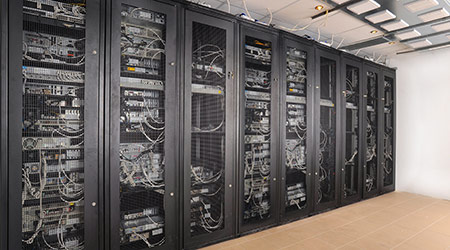With Data Centers, Mixed Picture on Energy Efficiency Best Practices
A survey of facility managers promises some increase in use of efficiency measures.
Energy efficiency has long been a major concern for data center facility managers. The past decade has seen steady growth both in the range of data center energy efficiency strategies available to facility managers, and in the extent to which those strategies are being used. Even so, many existing data centers have failed to adopt best practice energy efficiency measures like air flow management and economizer use, according to a recent Building Operating Management survey. (Full results of the survey follow this overview.) The survey offers some good news: Plans for new and renovated data centers promise an increase in efficiency measures, according to respondents. Nevertheless, the picture is mixed: Adoption of best practices remains far from universal.
The survey looked at an array of measures intended to improve energy efficiency. Some questions were intended to gauge the organization's interest in energy efficiency. For example, the survey asked how interested top management was in energy performance; 35 percent of respondents said very concerned. Queried as to whether PUE (power usage effectiveness) had been calculated, 53 percent said yes. Other questions looked at whether the organization had used the Energy Star or LEED systems.
Other survey questions asked about an array of specific strategies for improving energy efficiency in existing and new data centers. Those results suggested that the next generation of data centers should be more energy efficient than the average data center of today. For example, 44 percent of respondents said that almost all of their existing data center space uses containment, with another 19 percent indicating it is now used in most data center space, while 70 percent said that they plan to use it in new or renovated data center space.
For some approaches that, while well established, are still not widely used, the gains promise to be more dramatic. For example, 35 percent of respondents said that in-row cooling is used in most or almost all data center space. For new or renovated data centers being planned, that number jumps to 48 percent.
The same pattern holds for liquid cooling: 24 percent for most or all existing data center space compared to 40 percent for new or renovated data centers.
Despite these gains, the survey suggests plenty of opportunity for improvement remains. Twenty eight percent don't plan to use Energy Star servers in new or renovated space, 30 percent don't plan to use hot aisle or cold aisle containment, and 42 percent don't plan to adopt new ASHRAE temperature guidelines. And the use of renewable energy is up only slightly.
The survey also highlights some significant differences between cloud or colocation data centers on the one hand, and enterprise data centers on the other, when it comes to energy efficiency. The bottom line: Survey data suggests that cloud and colocation providers, which are in the data center business, take energy efficiency more seriously than enterprise data centers. For example, 54 percent of cloud and colocation providers said that their top management is very concerned about data center energy efficiency; for enterprise data center facility managers, the number was 32 percent. And 73 percent of cloud and colo respondents had calculated PUE for at least one data center, compared to 51 percent of enterprise respondents.
One caveat to the results for cloud and colocation providers: The results are based on a small sample (13 responses). Nevertheless, anecdotal evidence — like published reports or conversations with industry sources — suggests that the cloud and colo crowd are generally more concerned about data center energy efficiency than their enterprise counterparts. That makes sense. Energy costs are a major operational expense for organizations that are in the data center business. What's more, greater energy efficiency can be a marketing advantage for cloud and colocation providers, helping them to increase revenue as well as reduce expenses.
Information for the survey was gathered through a series of emails from BOM Data Centers. Data were submitted during April 7 to April 24, 2017 and included 133 usable responses.
Edward Sullivan (ed.sullivan@tradepressmedia.com) is editor-in-chief of Building Operating Management.
Related Topics:













